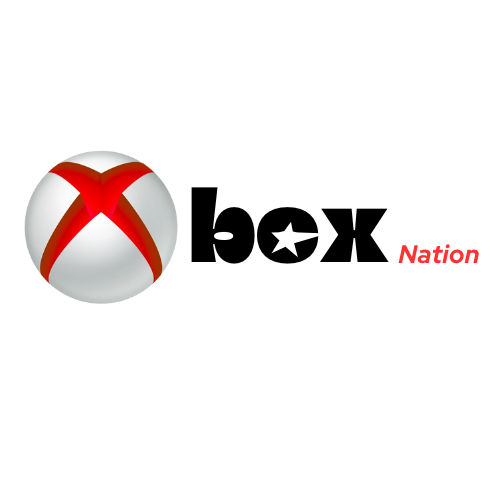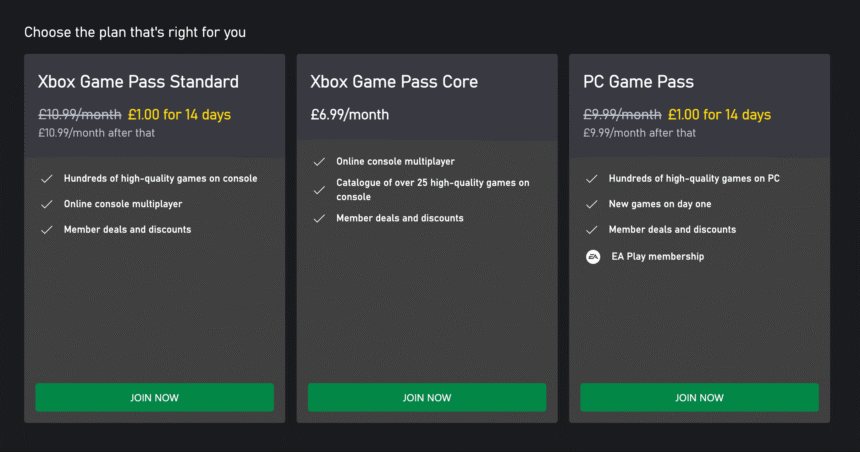Introduction: The State of Play in the Premium Gaming Sphere
The landscape of interactive entertainment has been dramatically reshaped by subscription services, moving from a model of outright ownership to one of all-access digital libraries. At the apex of this shift sits the premium subscription offered by the biggest name in console gaming: a unified service that grants unprecedented access across multiple devices. As we navigate the final quarter of 2025, with an expanded library, new hardware cycles rumored for the near future, and competing platforms consolidating their offerings, the essential question for every serious gamer and digital consumer is, “Does the value proposition of this flagship service hold up against its increased pricing and the dynamic market?”
- Introduction: The State of Play in the Premium Gaming Sphere
- The Financial Framework: Cost, Tiers, and Recent Adjustments
- The Content King: Day One Launches and Studio Investment
- Cloud Gaming: The Frontier of Digital Consumption
- Strategic Value Beyond Games: Ecosystem Integration
- Competitive Landscape and Future-Proofing
- Conclusion: The Definitive Assessment of Current Value
This is not a simple calculation of dollars versus downloads; it is a deep dive into ecosystem lock-in, content quality, and the evolution of cloud technology. The digital battlefield of 2025 is a complex tapestry of high-definition streaming, cross-platform play, and a relentless influx of Day One launches. To truly evaluate the premier subscription’s standing, we must look beyond the sheer volume of titles and scrutinize the experience it delivers, the quality of its recent additions, and its strategic positioning for the future of interactive media.
The Financial Framework: Cost, Tiers, and Recent Adjustments
The core argument for any subscription service hinges on its financial efficiency compared to buying games individually. As of late 2025, the flagship tier has seen significant adjustments. Following a widely reported price increase, the top-tier plan now sits at an elevated monthly rate, making the consumer’s financial burden heavier than in previous years.
A Shifting Price Structure
Currently, in late October 2025, the Ultimate plan is priced at approximately $29.99 per month in the US, a considerable jump from its prior rate. This hike forces subscribers to perform a rigorous cost-benefit analysis.
| Subscription Tier (October 2025) | Estimated US Monthly Price | Key Features | Primary Audience |
| Ultimate | $29.99 | Console, PC, Cloud Gaming, Online Multiplayer, Day One Launches, EA Play, Ubisoft+ Classics (Select Titles), In-Game Perks | The all-in-one gamer; owns both PC and console; relies on cloud streaming; seeks maximum value. |
| Premium (Console/PC) | $14.99 – $16.49 | Console/PC Game Library, Day One Launches (Select), Online Multiplayer (Console) | Platform-specific gamers (only console or only PC) who still desire Day One access. |
| Essential | $9.99 | Online Multiplayer, Core Game Library (Rotating titles), Deals/Discounts | Budget-conscious console players primarily focused on online service. |
Source: Publisher/Retailer pricing data, October 2025.
The key differentiator remains the Ultimate tier, which bundles four major services: the core game catalog, the PC library, the console online multiplayer access, and the high-performance cloud streaming technology. The inclusion of additional publisher libraries, such as EA Play and a selection of Ubisoft Classics, further complicates the value equation. Even with the elevated price, acquiring a new major title on launch day typically costs $70 to $80. A single subscription month provides access to hundreds of games, potentially offsetting the cost of just one new release. The financial justification, therefore, depends entirely on the subscriber’s gaming frequency and appetite for Day One titles.
The Content King: Day One Launches and Studio Investment
The primary engine of the platform’s value is its commitment to launching all first-party studio titles directly into the service on their release day. This strategy, unprecedented in the industry, ensures a continuous stream of premium, high-budget content. The late 2025 slate demonstrates a strong adherence to this promise, heavily influencing the current perception of value.
Live Content Stream: October – November 2025 Highlights
In this current period of October and early November 2025, the platform is reinforcing its content dominance with significant Day One releases:
- Commandos: Origins (Available Now): A return to the classic real-time tactics genre, this Day One launch is a substantial win for strategy enthusiasts, combining nostalgic gameplay with modern visual fidelity.
- Microsoft Flight Simulator 2024 (Available Now): The sequel to one of the most technically impressive simulations ever made, this title demonstrates the platform’s ability to host hyper-realistic, graphically demanding experiences from launch.
- The Outer Worlds 2 (Coming October 29): The highly anticipated sequel to Obsidian Entertainment’s award-winning sci-fi RPG is arguably the biggest first-party title of the quarter, offering a massive, sprawling adventure available instantly to subscribers.
- Football Manager 26 (Coming November 4): A perennial favorite for simulation fans, the latest installment arrives Day One, ensuring the most dedicated players do not have to purchase the annual update separately.
- PowerWash Simulator 2 (Available Now): While a more niche title, its Day One presence highlights the diversity of the library and the platform’s commitment to independent and “cozy” gaming sectors.
Furthermore, the library continues to be refreshed with major third-party additions, though these are typically not Day One releases. Recent significant additions in the wider October catalog include:
- Diablo IV (Integration from the recent acquisition, solidifying a major AAA title within the library).
- Assassin’s Creed Mirage (A more focused, traditional experience from a major third-party publisher).
- Senua’s Saga: Hellblade 2 (A critically acclaimed, narrative-focused adventure).
The immediate availability of titles like The Outer Worlds 2 and Microsoft Flight Simulator 2024 provides a powerful, tangible return on investment, particularly for users who would purchase these titles at full price anyway. The value here is undeniable: the subscription functions as a savings plan for future major releases.
Cloud Gaming: The Frontier of Digital Consumption
Cloud gaming, or game streaming, is the key feature that distinguishes the Ultimate tier from its lesser counterparts and its main competitors. In 2025, this technology has matured significantly, moving beyond simple novelty into a truly functional feature.
Multi-Device Accessibility and Performance
The cloud service allows users to stream hundreds of titles to a variety of devices, including Android phones, tablets, PCs, and smart televisions. This feature is a game-changer for accessibility, transforming almost any screen into a high-powered gaming console.
- Real-Time Latency Improvements: Advances in server infrastructure and network optimization have notably reduced input latency. While still not perfectly comparable to native console play for competitive esports, the experience for single-player RPGs, strategy games, and open-world adventures is smooth and highly playable.
- Touch Controls and VR Integration: The service continues to experiment with tailored touch controls for mobile devices, making casual play more intuitive. Furthermore, the burgeoning integration with augmented reality and virtual reality devices signals a commitment to future-proofing the service, allowing early adopters to experiment with new gaming formats without purchasing full software titles.
- Global Reach and Server Density: While geographical limitations still exist, the platform’s continuous expansion of its server farms has improved connection quality in previously underserved territories. This global scaling is crucial for its long-term viability as the primary driver of digital game consumption.
The ability to instantly jump into a massive RPG like Avowed or an ambitious sequel like The Outer Worlds 2 on a tablet while traveling, without a download or dedicated hardware, represents the future of gaming. For the modern consumer demanding flexibility, this one feature alone can easily justify the premium cost.
Strategic Value Beyond Games: Ecosystem Integration
The Ultimate tier is more than just a library of games; it is an integrated gateway to a comprehensive digital ecosystem. The strategic inclusions of services from major third-party publishers are now a critical component of its value.
The Power of the Partnership Bundles
- EA Play Integration: This gives subscribers access to a vault of Electronic Arts’ titles, including popular sports franchises (Madden NFL 25, F1 24) and major narrative adventures (Star Wars Jedi: Survivor). For fans of these publishers, this represents a substantial, separate subscription that is bundled at no additional cost.
- Ubisoft+ Classics: The recent expansion to include a selection of iconic Ubisoft titles further strengthens the library’s breadth. While not the full Ubisoft+ catalog, the inclusion of fan favorites like Assassin’s Creed and Far Cry titles provides exceptional historical depth.
These partnerships effectively absorb the cost of subscribing to multiple separate services, a factor that significantly increases the perceived value of the Ultimate plan. It transforms the service from a single-publisher offering into a multi-studio super-bundle.
Competitive Landscape and Future-Proofing
No evaluation of this premier subscription is complete without acknowledging the competition. In 2025, the primary competitor offers a strong multi-tiered service, but it lacks the critical Day One launch advantage for its core first-party releases, choosing instead to sell those titles separately at full price. This difference is the strategic chasm defining the current market.
The platform under review is making a massive, capital-intensive bet on the long-term shift to subscriptions, prioritizing subscriber count and hours played over immediate software sales. Its aggressive acquisition strategy, bringing legendary studios and franchises under its umbrella, ensures that the future pipeline of exclusive, high-quality content is robust. The commitment to launching The Elder Scrolls IV: Oblivion Remastered and the anticipation for titles like DOOM: The Dark Ages (slated for 2026) all confirm the ongoing investment.
Trending Keyword Inclusion for Late 2025:
- Gaming Subscription Value 2025
- Cloud Gaming Performance
- Day One Exclusive Games
- Next-Gen Console Strategy
- Digital Entertainment Ecosystem
- Cross-Platform Gaming Dominance
- AAA RPGs on Subscription
- Obsidian Entertainment Games
- Microsoft Flight Simulator 2024 Release
- The Outer Worlds 2 Launch
Conclusion: The Definitive Assessment of Current Value
The question of whether the top-tier gaming subscription is still worth its price in late 2025 is met with a resounding Yes, but with a critical caveat.
For the Core Subscriber (The Ecosystem Investor):
The value remains exceptionally high. Despite the increased monthly rate, the service delivers a comprehensive package that cannot be matched by competitors: Day One access to the most anticipated titles (The Outer Worlds 2), a truly functional high-speed cloud streaming service, and the integration of multiple separate publisher libraries (EA Play, Ubisoft Classics). The subscriber is not just paying for games; they are investing in the future of their entire digital gaming life, ensuring access to all major first-party releases, and a massive, rotating back-catalog. For anyone who buys three or more new games per year or utilizes both PC and console/cloud services extensively, the subscription is a powerful financial hedge and a convenience powerhouse.
For the Selective Gamer (The Content Cherry-Picker):
The value is more nuanced. Gamers who only play a few older titles or are strictly tied to one platform (console or PC) may find better efficiency in the lower-cost tiers or by waiting for sales. The significant price difference between the Ultimate tier and the more basic offerings demands that the user fully utilize the advanced features like cloud streaming and the multiple bundled services to justify the premium cost.
In final analysis, the top-tier gaming subscription in late 2025 has cemented its position as the premier content deal in the entire interactive media space. It manages to balance a high-volume, continuously rotating library with the singular, defining advantage of immediate access to the biggest, most anticipated new releases. The recent price adjustment is substantial, but so is the continued expansion of its integrated features and the caliber of its Day One content pipeline. Its overall worth is tied directly to the consumer’s engagement with the breadth of its ecosystem.

